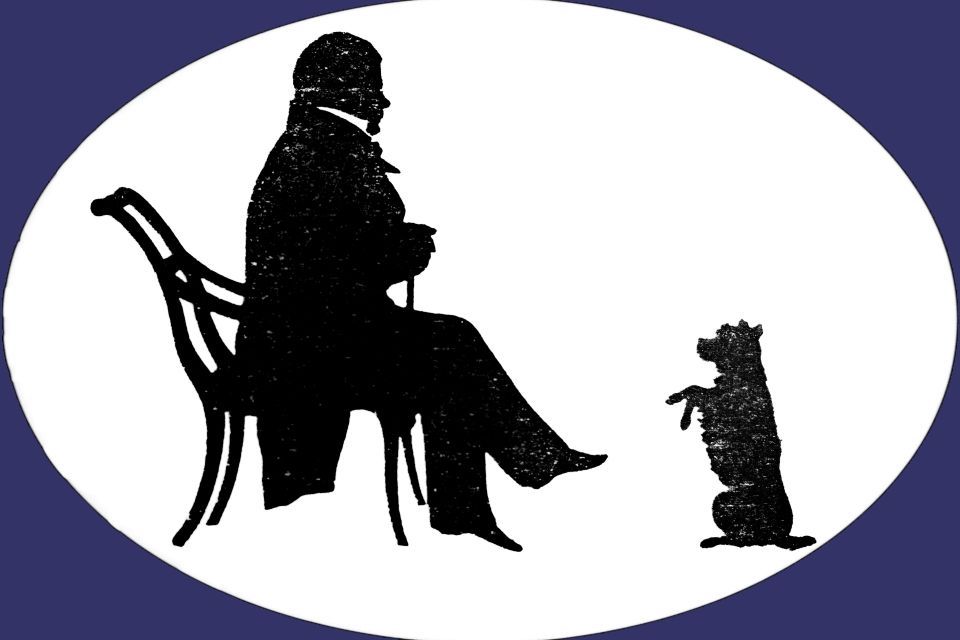The Enigma of Sir Walter Scott's "Moor" Supporter
Prof. Gillian Black and Sir Crispin Agnew
Thursday 9th March 2023
Summary of the Talk:
Professor Black and Sir Crispin Agnew explored the origins and meaning behind the depiction of a "Moor" (an African figure) as one of the heraldic supporters in Sir Walter Scott’s coat of arms, examining whether it represented a connection to slavery or something else.
Key Findings and Structure:
- Origin of the Talk:
Prompted by a remark from African historian Kelly Foster, who noted Scott’s use of a "Moor" as a supporter and questioned whether it might have slavery connotations. This sparked Professor Black and Sir Crispin’s research. - Scott’s Coat of Arms (1820):
- Granted prior to his baronetcy, in order to comply with a royal requirement that recipients of baronetcies must already bear arms.
- Re-granted in 1822 to include supporters, one of which was a "Moor" holding a flaming torch—a known symbol of slave rebellion.
- Historical Context:
- While baronets generally weren’t entitled to heraldic supporters, Scottish baronets often were, due to historical privileges (e.g. clan chiefs, feudal barons).
- The inclusion of the Moor supporter came not with his original arms but with the regrant, likely on the basis of Scott's claimed descent from the Haliburtons of Dirleton.
- Symbolism of the "Moor":
- Flaming torch traditionally linked with rebellion among enslaved people, e.g. during uprisings in the Caribbean.
- However, research showed no evidence that Scott had personal or financial connections to the slave trade.
- The motif likely derived from earlier heraldic traditions via the Haliburton line, not as a slavery reference.
- Broader Research in Heraldry:
- Examples of enslaved figures in heraldry were found elsewhere in Scotland (e.g. Guruk, Sir Alexander Grant of Dalvey, Robert Glasgow of Mountgreenan), where the connections to the slave trade were explicit.
- In contrast, other Scottish heraldic uses of African figures (e.g. Clan Morrison, Lord Borthwick) relate to Crusades, name puns, or religious figures like Saint Maurice.
- English example: Sir Thomas Fowell Buxton, who used a similar figure to honour his anti-slavery campaigning.
- Silverware Mystery:
- Scott’s silver featured a white “savage man” instead of the African figure—perhaps suggesting discomfort or sensitivity over the symbolism of the Moor.
- Conclusion:
- No evidence that Scott supported or profited from slavery.
- The figure was inherited from earlier heraldic traditions, likely tied to the Haliburtons.
- The torch may be a symbolic flourish added by the heralds, perhaps misunderstood or misread in later years.
Notable Points:
- No Evidence of Slavery Connection for Scott: Both Abbotsford Trust and independent research confirm no known financial or ideological link to slavery in Scott’s life.
- Symbolic Complexity: The flaming torch is a loaded symbol, but its presence may not imply endorsement—Scott may have simply accepted what heralds presented without deep scrutiny.
- Heraldic Precedents: The use of Moors in heraldry predates transatlantic slavery and often links to Crusades or saintly traditions, especially in Mediterranean heraldry.
- Scott’s Legacy: His silence on slavery in his writing is noted, but his choice of heraldic symbolism likely reflected ancestral pride rather than personal ideology.


